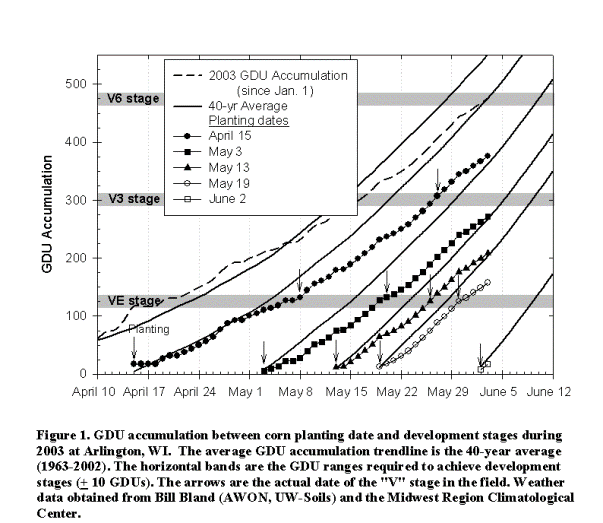
Tracking Corn Growth and Development: Slow development and purpling
June 5, 2003 10(12):92
Joe Lauer, Corn Agronomist
Growing degree unit accumulation has been slow resulting in slow corn development
as well. The first planting date on April 15 should be at V6 according to the 40-yr
average GDU accumulation pattern and the current corn growth and development models,
but instead it is currently only nearing V4; accumulating GDUs equivalent to a normal
May 3 planting date (Figure 1). GDU accumulations for all planting dates are slower,
except for June 2.
Only one planting date has exceeded the V3 benchmark, although the May 3 planting
date is close (V2.7). Since the last update, the May 19 planting date emerged on
May 30 and was right on schedule according to the GDU model.
Plants in both the April 15 and May 3 planting date showed significant purpling.
Digging up some plants, I found 3 to 5 healthy nodal roots and vigorous root growth
and concluded that the purpling is likely only temporary and expect the plants to
green up quickly once warmer weather occurs. Purpling and other nutrient deficiency
symptoms are often seen around V3-4 as the seminal and radical root systems give
way to the nodal roots, which eventually become the dominant root system for corn.
In spite of the cool temperatures, I have not seen many seedling diseases such as
"damping-off" or "powdery mildew" disease caused by Pythium.
Usually both cool and wet conditions favor development of this disease. Maybe
the only positive from the cool weather is that longer application windows are available
for post emergence herbicides. Since the corn is developing slower, most weeds will
also develop slower, although some weeds develop at lower base temperatures than
corn.
